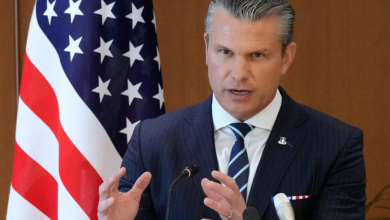Starlink’s Expansion in Mexico: A Booming Market with Challenges Ahead

Elon Musk’s Starlink has rapidly grown in Mexico, becoming one of the top internet providers. Despite strong partnerships and government contracts, competition looms as the satellite internet company faces new challenges in an increasingly lucrative market.
Starlink’s Meteoric Rise in Mexico’s Internet Market
Since entering the Mexican market in 2021, Elon Musk’s satellite internet company, Starlink, has experienced unprecedented growth. As Wired reported, Starlink has become Mexico’s sixth-largest provider of fixed internet services, overtaking established competitors in revenue and subscriptions. According to the Instituto Federal de Telecomunicaciones (IFT), Starlink manages over 160,630 satellite internet connections in the country, surpassing BAIT, Walmart’s internet provider.
This growth is significant considering Starlink’s relatively recent arrival in Mexico and the broader Latin American market. Starlink boasts nearly 4 million customers globally, with Mexico accounting for 4% of its total user base. While Brazil leads the region with 224,000 access points, Mexico remains a crucial market for the company, reflecting the demand for high-speed satellite internet, particularly in areas where traditional broadband services are unavailable or unreliable.
Starlink’s rise to prominence in Mexico is even more impressive when considering its competition. The IFT reports that Starlink billed approximately 638 million pesos in the second quarter of 2024, a remarkable feat given that the company only started operations three years ago. While this revenue is still dwarfed by telecommunications giants like Telmex, which earned 41 times more in the same period, Starlink outperforms other satellite internet providers, such as StarGroup, which reported 628 million pesos in revenue.
Starlink’s rapid ascent is primarily attributed to its ability to provide high-speed internet access in remote areas where traditional providers cannot operate effectively. This demand has allowed the company to carve out a niche market in Mexico, where many citizens are looking for reliable internet in underserved regions.
Government Contracts: A Key Success
Starlink’s success in Mexico cannot be attributed to consumer demand alone. Wired notes that one of the key drivers behind the company’s growth has been its lucrative government contracts. In November 2023, Starlink secured two significant contracts from Mexico’s Comisión Federal de Electricidad (CFE), totaling 3,331 million pesos. These contracts are part of the federal government’s Telecomunicaciones e Internet para Todos program, which aims to provide free mobile and internet services to remote and difficult-to-access areas.
These government partnerships have been instrumental in expanding Starlink’s reach and solidifying its position in the Mexican market. The contracts, valid through December 2026, align with the government’s broader objectives to bridge the digital divide and bring connectivity to all corners of the country. With Starlink’s satellite infrastructure, the company is uniquely positioned to fulfill this mandate, offering internet access in regions that traditional broadband providers have long underserved.
Wired’s report highlights that this close collaboration with the government has given Starlink a strategic advantage over competitors. By working directly with the administration, Starlink has gained access to new markets and enhanced its reputation as a reliable provider capable of delivering essential services to Mexico’s most isolated populations.
However, Starlink’s reliance on government contracts also comes with risks despite these advantages. As the company expands, it may face increased scrutiny over its business practices and whether it can continue to meet the government’s lofty expectations for nationwide connectivity.
High Costs for Mexican Consumers
While Starlink’s expansion in Mexico has been rapid, the cost of its services raises questions about its long-term sustainability in the Mexican market. As Wired points out, Starlink’s prices are significantly higher than traditional internet providers. Mexican consumers who want to subscribe to Starlink’s basic residential plan must pay a one-time fee of 5,900 pesos for the installation kit, which includes an antenna and Wi-Fi router. Additionally, customers face monthly service charges of 1,045 pesos, plus 55 pesos in taxes and 470 pesos for shipping and handling.
These costs are well above the average broadband prices in Mexico, where consumers typically pay around 533 pesos per month for high-speed internet, according to monitoring platform Cable.co.uk. For many Mexican households, especially those in low-income or rural areas, Starlink’s upfront and ongoing costs may be prohibitive.
Despite these challenges, Starlink has positioned itself as a premium service provider, offering internet speeds between 50 and 200 megabytes per second, far exceeding what many traditional providers can offer in rural areas. This speed advantage is a significant selling point for customers willing to pay more for reliable and fast internet service, especially in regions where other options are slow or nonexistent.
However, Wired’s analysis suggests that Starlink may face pressure to lower its prices to remain competitive as more competitors enter the market and technology improves. The introduction of cheaper alternatives could force Starlink to reevaluate its pricing strategy, particularly if the company wants to attract a broader customer base beyond affluent or remote households.
Competition and Market Growth
Looking ahead, Starlink’s future in Mexico appears promising, but not without challenges. Wired reports that market analysts predict intense competition in the coming years, as more companies vie for a share of Mexico’s growing demand for internet services. The Insight Partners, a venture capital consultancy, estimates that Mexico’s telecommunications sector could be worth more than $23.8 billion by 2031, attracting a wave of new players eager to capitalize on the market’s potential.
One of the biggest challenges for Starlink will be maintaining its market share as new competitors enter the space. The company’s current dominance is partly due to its early entry into the satellite internet market and its partnerships with the Mexican government. However, as other companies develop similar technologies or offer lower-cost solutions, Starlink may find it harder to maintain its competitive edge.
Moreover, regulatory challenges could also pose obstacles for Starlink’s continued growth in Mexico. The company is already subject to stringent regulations by the IFT, and any changes to these regulations could affect its operations. For example, recent rules prohibit the use of credit cards for betting, a policy that reflects the government’s growing interest in regulating digital services. If similar regulatory frameworks are applied to the satellite internet industry, Starlink could face new compliance hurdles that may slow its expansion.
Despite these potential challenges, Starlink’s leadership in satellite internet technology and its established presence in Mexico give it a strong foundation to build upon. The company’s ability to innovate and adapt to changing market conditions will be crucial to its long-term success. As Wired notes, Starlink’s vast network of over 6,000 satellites gives it a unique advantage, allowing it to offer reliable service even in the most remote corners of the country.
Ultimately, the future of Starlink in Mexico will depend on its ability to navigate the complexities of the local market, balance its government partnerships, and remain competitive in an increasingly crowded industry.
Also read: High-Tech Balloon Surveillance: Saving Lives Along the U.S.-Mexico Border
Starlink’s growth in Mexico reflects the country’s evolving internet landscape, where demand for high-speed connectivity is on the rise, particularly in underserved areas. While the company’s partnerships with the Mexican government and its advanced satellite technology have propelled its success, challenges remain on the horizon. As competition intensifies and regulatory pressures increase, Starlink will need to adapt to maintain its leadership in the Mexican market. For now, however, Elon Musk’s satellite internet service remains a key player in Mexico’s digital transformation.




